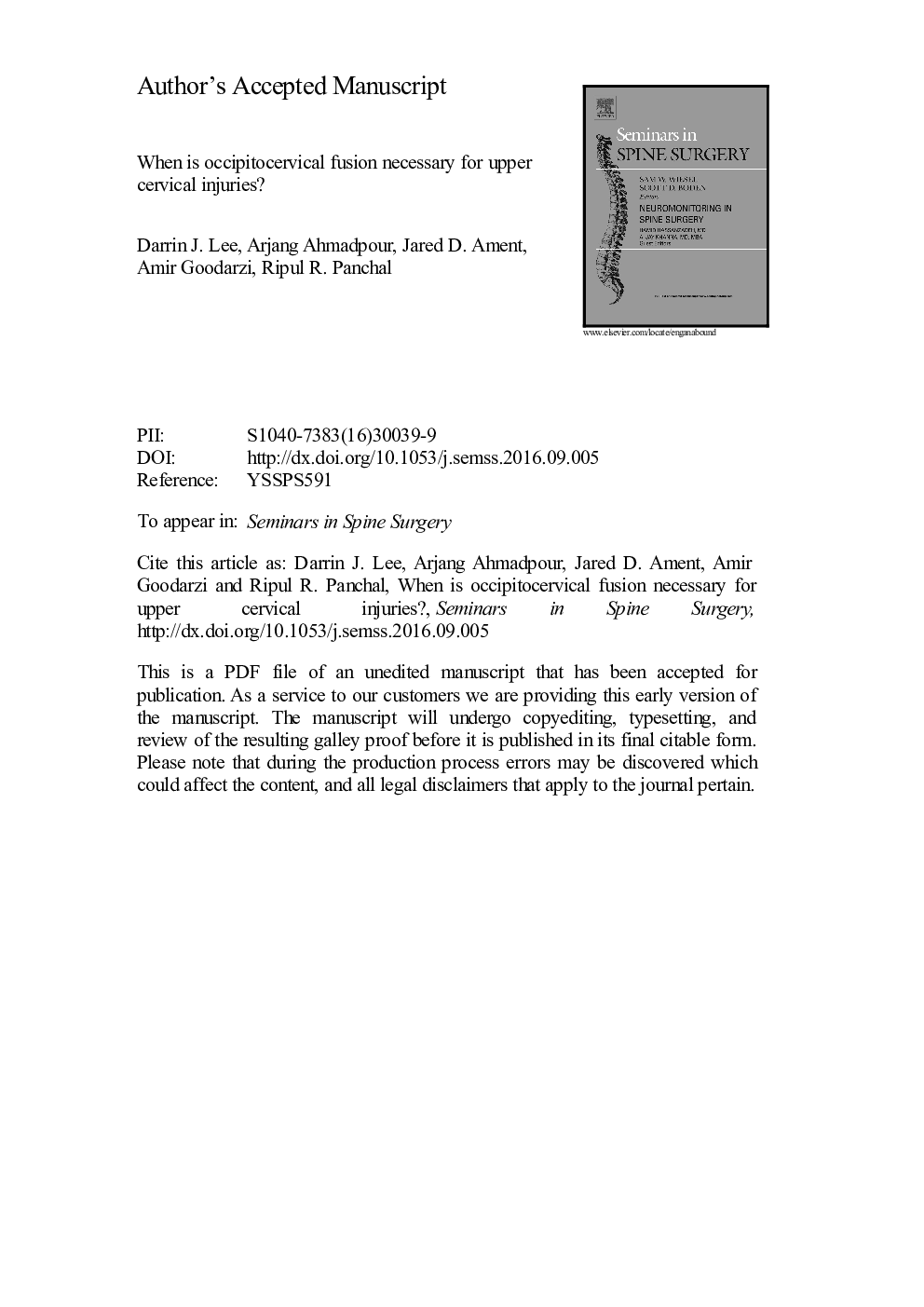| Article ID | Journal | Published Year | Pages | File Type |
|---|---|---|---|---|
| 5712509 | Seminars in Spine Surgery | 2017 | 20 Pages |
Abstract
Craniocervical traumatic injuries affect the skull base, atlas and/or axis, and account for a minority of cervical injuries. The craniocervical junction is biomechanically responsible for the majority of axial rotation at the atlantoaxial complex and the greatest range of flexion/extension at the occipital-C1 joint. Therefore, identifying appropriate surgical indications is essential. The goals of occipitocervical fusion are neurological improvement, biomechanical stability, and correction of imbalance. Significant advances in surgical technique, hardware, and technology have occurred. Currently, the plate-screw-rod arthrodesis technique is the most effective technique. In the future, biomechanical studies and intraoperative navigation may reduce potential intraoperative and postoperative complications.
Related Topics
Health Sciences
Medicine and Dentistry
Orthopedics, Sports Medicine and Rehabilitation
Authors
Darrin J. MD, PhD, Arjang BS, Jared D. MD, MPH, Amir MD, Ripul R. DO,
